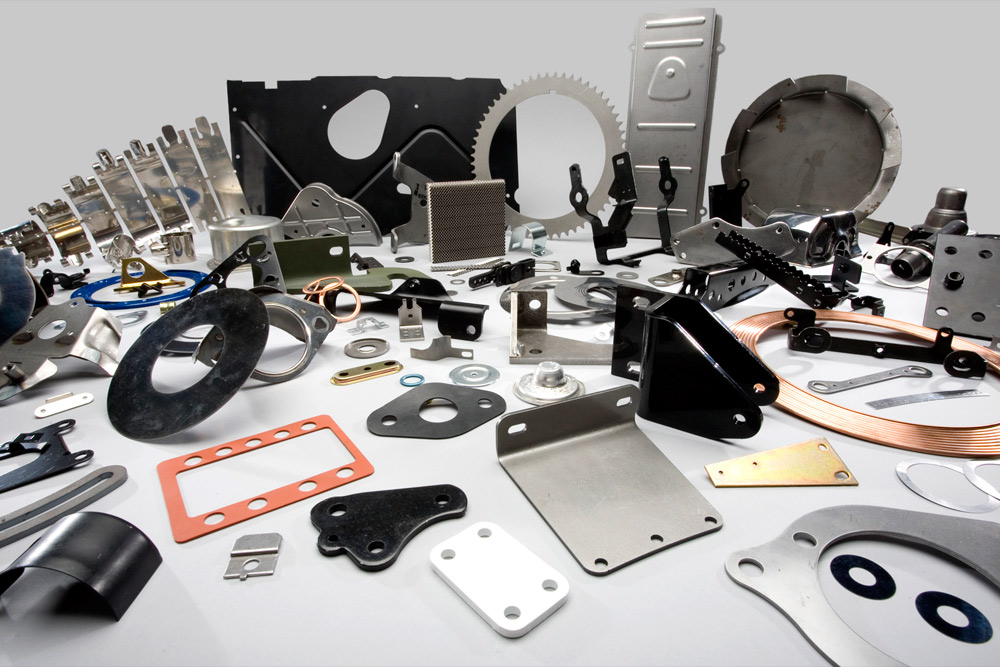Just How Metal Stamping Changes Manufacturing Performance
Just How Metal Stamping Changes Manufacturing Performance
Blog Article
Metal Marking Developments: Elevating Production Processes for Superior Results
In the world of making procedures, steel marking has actually long been a keystone technique for creating an array of precision components. With the unrelenting march of technological innovation, the landscape of steel marking is undergoing a substantial makeover.
Evolution of Metal Stamping Techniques

Additionally, innovations in material science have actually brought about the development of high-strength alloys that can now be seamlessly marked right into detailed forms, satisfying a wider series of commercial applications. The integration of robotics and fabricated intelligence has actually better optimized the marking procedure by improving speed and precision while decreasing the threat of human error.

Influence of Advanced Products
Have sophisticated materials transformed steel marking processes considerably in the manufacturing sector? The response is a definite yes (Metal Stamping). The integration of innovative materials has revolutionized metal marking, making it possible for producers to achieve higher precision, enhanced efficiency, and boosted product high quality. By making use of products such as high-strength alloys, progressed compounds, and innovative layers, metal stamping procedures can currently produce elements that are lighter, more powerful, and a lot more resilient than ever in the past.
These advanced products use premium mechanical buildings, corrosion resistance, and thermal stability, permitting makers to meet the demands of modern-day markets such as aerospace, automobile, and electronics. Additionally, the usage of innovative products in steel marking has actually facilitated the production of complex geometries and complex layouts that were formerly unattainable through conventional techniques.
In addition, the application of advanced materials has resulted in minimized product waste, lower production expenses, and shorter preparations, making steel marking procedures a lot more sustainable and economical. As technology remains to development, the effect of sophisticated products on metal marking processes is expected to drive further innovation and boost the competition of suppliers in the worldwide market.
Automation in Steel Stamping
The advancement of steel marking processes driven by the integration of innovative products has set the phase for substantial advancements in automation within the production sector. Automation in steel marking has actually changed manufacturing processes, improving efficiency, precision, and general outcome top quality. Via the utilization of robotics, sensing units, and computer-controlled systems, tasks that were taxing and once hands-on can currently be executed with unmatched rate and accuracy.
Automation in metal stamping not just increases manufacturing prices yet additionally guarantees consistency in the manufacturing process. By reducing human intervention, the risk of mistakes is considerably reduced, causing higher degrees of item uniformity and integrity. Furthermore, automation allows suppliers to embark on complex stamping jobs that would be tough or not practical to attain manually.
Moreover, automation in steel marking contributes to a more secure working environment by lowering the need for workers to take part in recurring or dangerous tasks - Metal Stamping. This change in the direction of automation go now not only improves productivity yet also leads the way for the future of manufacturing, where technology plays a central role in driving functional quality
Quality Assurance and Assessment Equipments
With an emphasis on precision and reliability, quality assurance and assessment systems play a crucial duty in guaranteeing product excellence in metal stamping procedures. These systems are designed to keep track of every stage of production, from material evaluation to the last product, to guarantee that all components meet the required requirements. By executing sophisticated modern technologies such as optical evaluation systems, coordinate measuring equipments (CMM), and automated determining tools, suppliers can detect even check this site out the tiniest inconsistencies in measurements, surface area top quality, and total honesty of stamped parts.

Sustainability Practices in Metal Stamping
Structure upon the structure of precision and integrity developed with top quality control and examination systems, the assimilation of lasting techniques in steel stamping processes is significantly coming to be a prime focus for makers seeking to decrease environmental influence and maximize resource utilization. Sustainability techniques in steel marking encompass a variety of efforts focused on decreasing waste generation, energy intake, and greenhouse gas exhausts throughout the manufacturing process.
One secret facet of sustainability in steel stamping is the fostering of eco-friendly products and modern technologies that promote recyclability and waste reduction. By making use of recycled materials and executing energy-efficient machinery, manufacturers can lower their carbon impact and add to a much more sustainable manufacturing cycle. Additionally, maximizing production procedures to lessen material waste and power use not only benefits the setting but additionally results in cost financial savings for services in the future.
Moreover, the implementation of lasting practices in steel stamping can boost brand reputation and charm to ecologically conscious consumers. As sustainability remains to obtain significance in the production industry, incorporating environment-friendly initiatives right into metal marking processes is important for lasting success and competition out there.
Verdict
Finally, steel stamping strategies have considerably evolved with time, including innovative products and automation hop over to here to enhance producing processes. Quality assurance and assessment systems play an essential duty in making sure exceptional results, while sustainability practices are significantly being carried out to reduce environmental impact. These technologies in metal marking have reinvented the sector, bring about more efficient and sustainable production methods for different markets.
Steel marking, as soon as a manual and labor-intensive procedure, has transformed into an extremely automated and advanced method of shaping steel sheets into various forms and designs.Have advanced materials transformed steel marking processes considerably in the manufacturing sector? By making use of materials such as high-strength alloys, progressed composites, and ingenious coverings, steel stamping processes can currently generate elements that are lighter, more powerful, and more durable than ever before.
The advancement of metal stamping processes driven by the assimilation of sophisticated materials has established the phase for substantial advancements in automation within the production sector.In final thought, metal marking methods have significantly advanced over time, including sophisticated materials and automation to improve making procedures.
Report this page